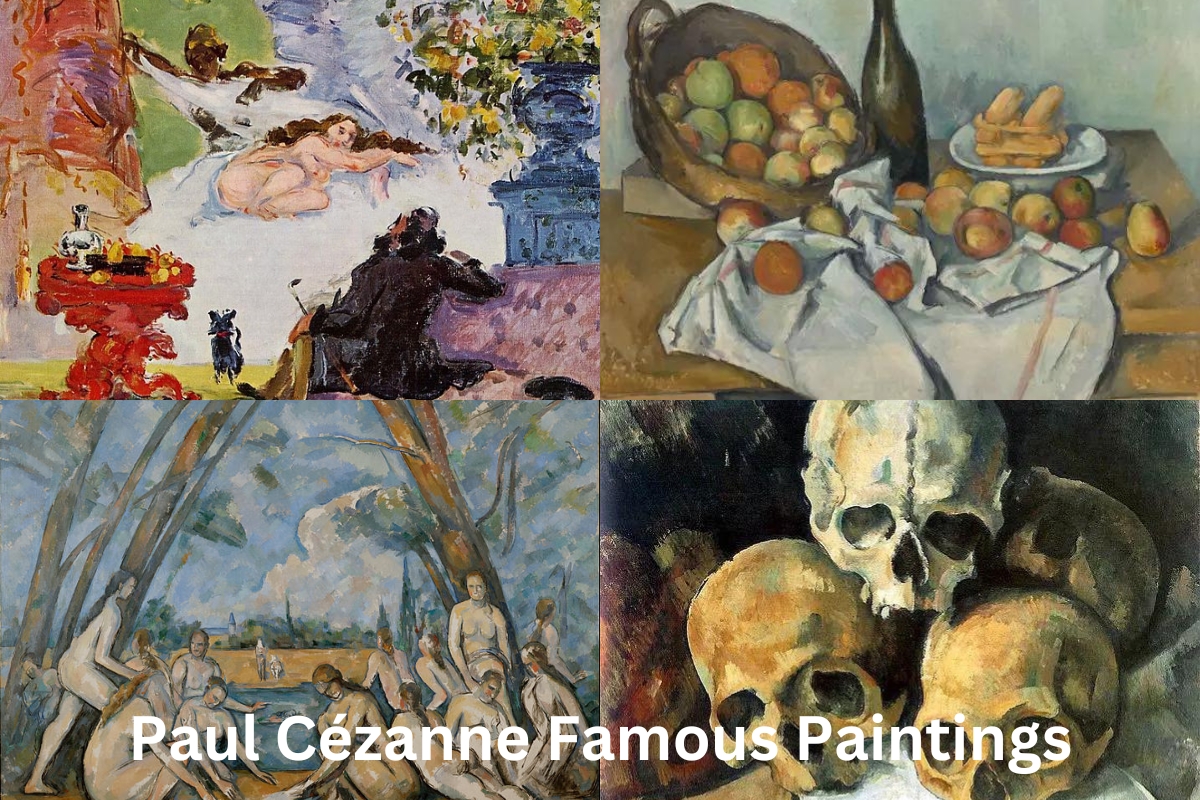Paul Cezanne was one of the most famous painters in history until he passed away in 1906. He was born in 1839 and became famous during his lifetime. He is considered to be the most well-known artist to emerge from the post-impressionist movement.
His body of work served as a transitional link between the impressionist movement of the 18th century and the style that predominated in the 20th century.
In the course of his career, Paul Cezanne earned a reputation for employing a palette knife to create works of art of the highest caliber. This is a stage that played a significant role in the evolution of modern expressionism.
Paul Cezanne aimed to achieve a certain degree of geometric simplification through the use of this method. He would depict a tree trunk as a cylinder and an apple as a sphere in his paintings.
The Bathers, which was created in 1905, is considered to be his most well-known piece. There are a number of well-known artists, such as Matisse and Picasso, who are on record as claiming that Paul Cezanne is the progenitor of all of us.
Cubism is said to have originated as a result of Paul Cezanne’s ability to depict intricate and multifaceted perspectives in his paintings. Paul Cezanne imprinted himself irrevocably on the world of painting in this way.
Paul Cézanne Famous Paintings
1. The Large Bathers
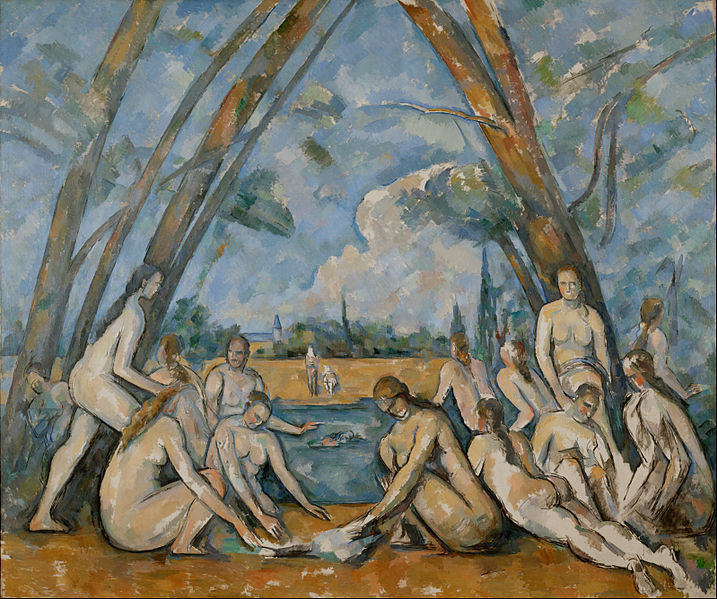
Often regarded as Cézanne’s magnum opus, “The Bathers” is also sometimes referred to as “the Big Bathers” or “the Large Bathers” to differentiate it from his other, lesser works.
After seven years of effort, Cézanne died in 1906 with the painting still unfinished. This picture was acquired by the Philadelphia Museum of Art in 1937 for $110,000 from the trust fund of their key supporter, Joseph E. Widener.
The abstract nude females depicted in Large Bathers give the painting intensity and density. In terms of symmetry, it stands out from the rest of his work thanks to the way the naked figures fit into the triangular shape of the trees and river.
Large Bathers is reminiscent of the work of Titian and Peter Paul Rubens since it was painted using the same method that was used while painting landscapes and still lifes.
Many have drawn parallels between these women and Picasso’s Les Demoiselles d’Avignon, another famous group of naked women from the same era.
2. The Basket of Apples
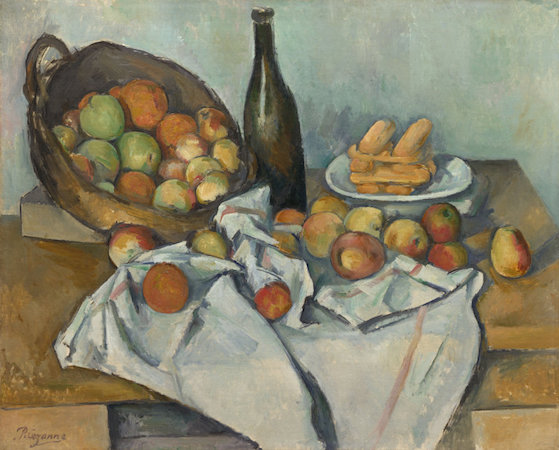
Still life oil painting titled The Basket of Apples (French: Le panier de pommes) that was completed about 1893. Instead of depicting objects accurately, the Cézanne distorted them to show other viewpoints.
Many subsequent art trends, such as Fauvism and Cubism, were influenced by this method. The Art Institute of Chicago owns it and displays it in the Helen Birch Bartlett Memorial Collection.
The Basket of Apples displays how Cézanne combined numerous viewpoints, a brilliant colour palette and analytical brushwork to construct imaginative compositions in counterpoint to realistic renderings of everyday objects.
Many consider him the “Father of Modern Art” because the Fauvist and Cubist movements can be traced back to his canvases. This method of distortion inspired artists such as Pablo Picasso and Georges Braque.
3. Mont Sainte-Victoire seen from Bellevue
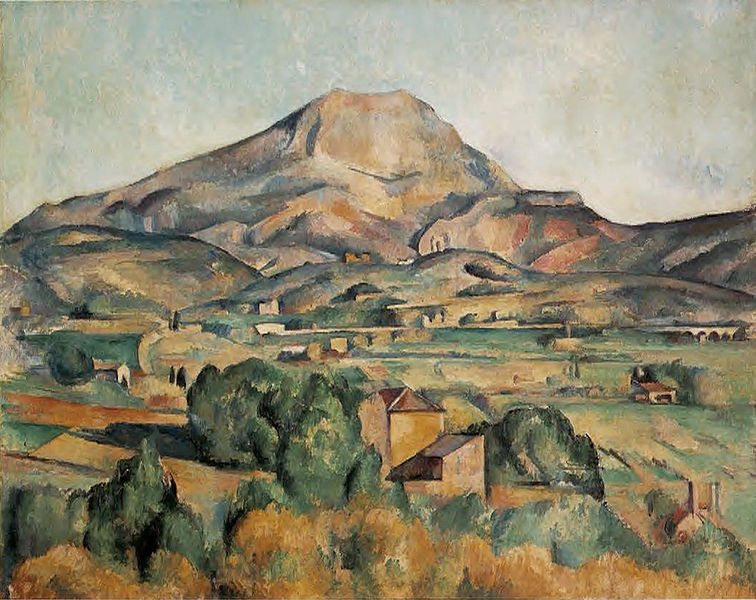
An 1886 landscape of Mont Sainte-Victoire as seen from Bellevue. The picture depicts the Mont Sainte-Victoire in the southern French region of Provence. Cézanne spent a great deal of his time at Aix-en-Provence during the time, and he felt a deep connection to the area’s natural beauty.
From his home, he had a clear view of a mountain that stood out from the rest of the countryside, and he depicted it in his paintings on multiple times.
Also, Cézanne included the railroad bridge over the Arc River in the middle of the picture to the right. This bridge is part of the Aix-Marseille line, which runs through the central valley of the Arc River.
The work exemplifies Cézanne’s goal of bringing clarity and organization to impressionist landscapes.
The painting’s lighting and color scheme create the illusion of a pattern that is not artificial but rather occurs in nature.
4. Pyramid of Skulls
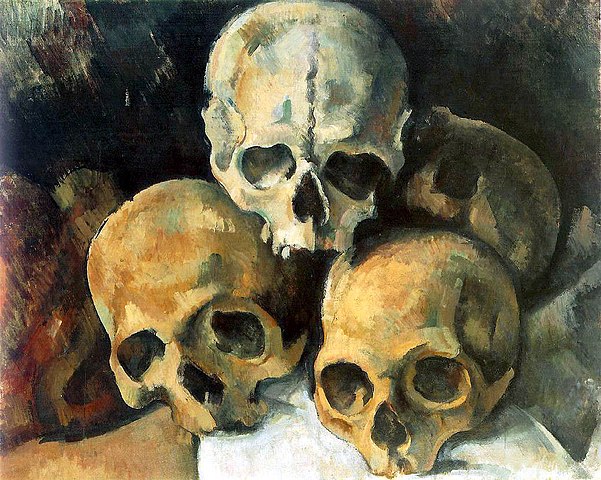
In his later years, the subject of human skulls became increasingly important to Cézanne, as seen in his oil on canvas work Pyramid of Skulls, which was completed about 1901.
Many of the still life skull paintings created by Cézanne between 1898 and 1905 reveal the artist’s recurring obsession with death.
These oil and watercolor paintings show a nuanced take on the age-old subject of vanitas.
5. The Card Players
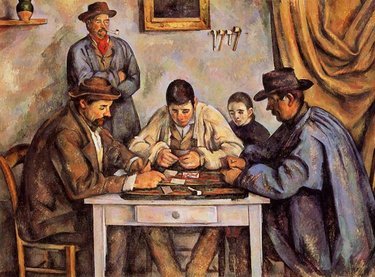
Cézanne’s final phase, in the early 1890s, yielded a sequence of oil paintings titled The Card Players.
The size, number of participants, and atmosphere of each variant are unique. Cézanne also did countless preparatory studies for The Card Players series.
In 2011, a version of The Card Players sold for an estimated $250 million ($301.1 million today) to the Royal Family of Qatar, setting a new record for highest ever price for an artwork that would stand until November 2017.
6. Apples and Oranges
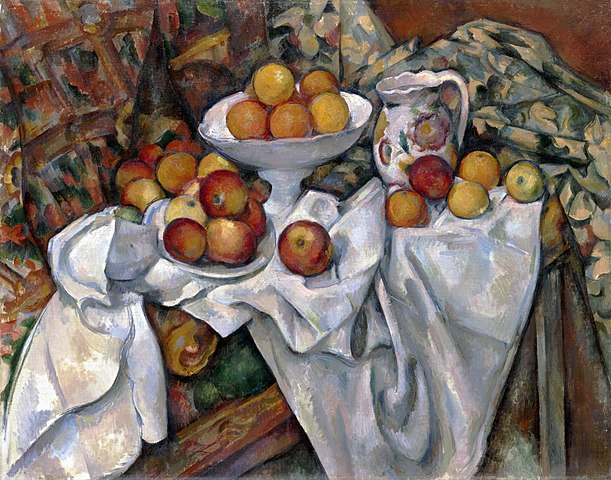
Paul Cézanne painted Apples and Oranges, a still life on canvas, in the year 1899. It was finished at the conclusion of the French artist’s life, making it one of his final works.
Also Read: Famous Orange Paintings
A total of five further works with similar themes and approaches were done over the same time frame. Cézanne’s still life is one of the artist’s most known works.
7. Mont Sainte-Victoire and the Viaduct of the Arc River Valley
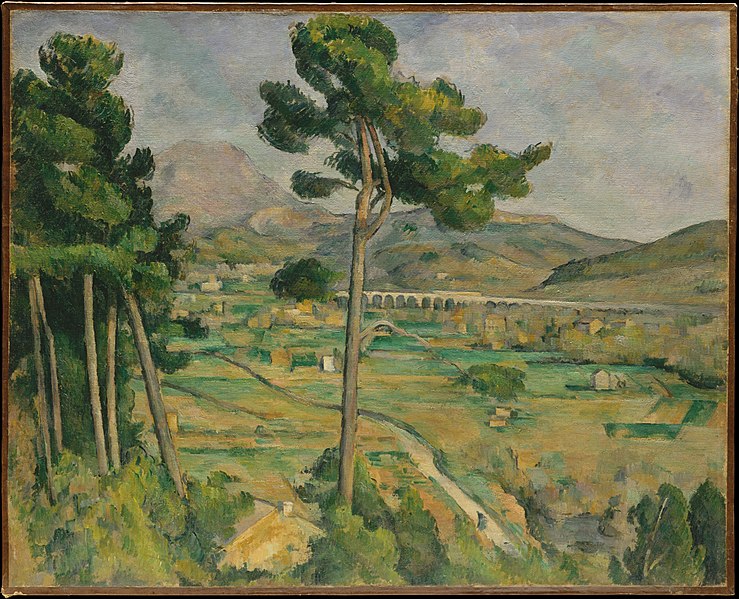
Oil on canvas painting titled “Mont Sainte-Victoire with the Viaduct in the Arc River Valley,” painted between 1882 and 1885. It shows Cézanne’s city of Aix-en-Provence, as well as the mountain of Saint-Victoire and the valley of the Arc River.
After the death of Louisine Havemeyer in 1929, the artwork was left to the Metropolitan Museum of Art in New York by the couple’s heirs.
The painting is one of the tiniest in Cézanne’s oeuvre, measuring a mere 65.5 cm 81.7 cm (25.8 in 32.2 in).
The mountain was a popular subject for Cézanne, who painted it multiple times under different titles (Mont Sainte-Victoire seen from Bellevue, Mont Sainte-Victoire with Large Pine, Plain near Mont Sainte-Victoire, and simply Mont Sainte-Victoire).
In this work, Cézanne experiments with the use of layers to create an illusion of depth by stacking horizontal planes that lead the viewer deeper into the scene.
8. Dish of Apples
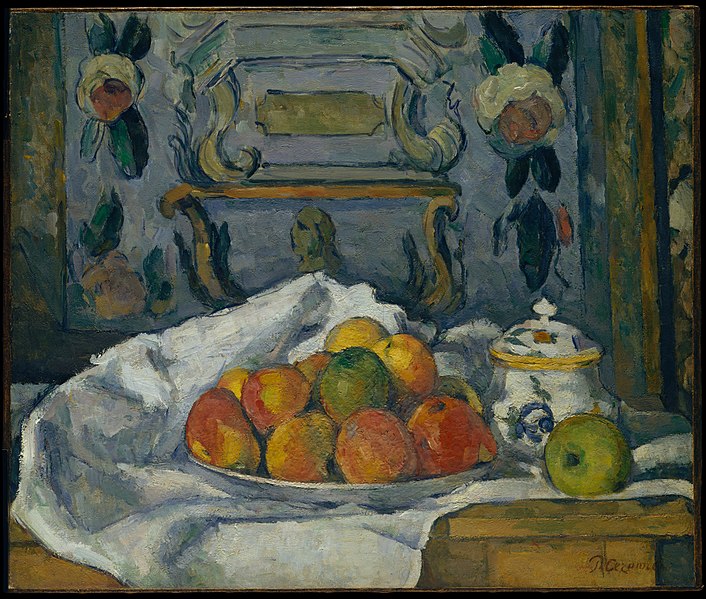
Another of Cézanne’s signature style of still life with fruit, Dish of Apples is currently housed in the Metropolitan Museum of Art, New York.
9. Boy in a Red Vest
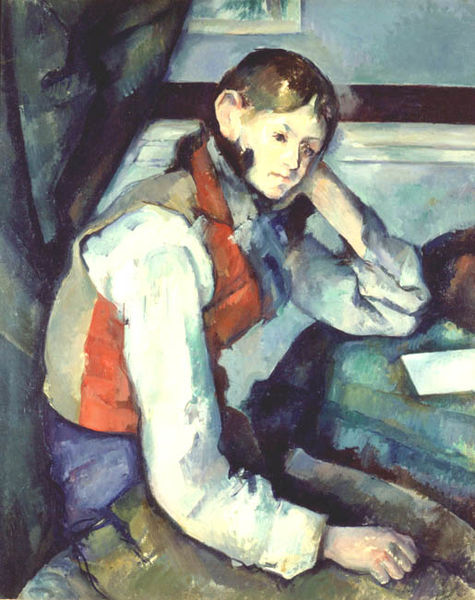
The artwork The Boy in the Red Vest or The Boy in the Red Waistcoat was completed in 1889 or 1890. It exemplifies Cézanne’s refined, subtle, and forward-thinking style after the year 1880.
In order to investigate the relationship between the figure and space, Cézanne produced four oil portraits of the Italian child in the red vest, each in a different stance.
Of the four works by this name, the one depicting the kid sitting with his head resting in his palm and his elbow on a table is by far the most well-known and the one most often used as a synonym for the title. It is being held right now in Zürich, Switzerland. Museums in the Uni
10. A Modern Olympia
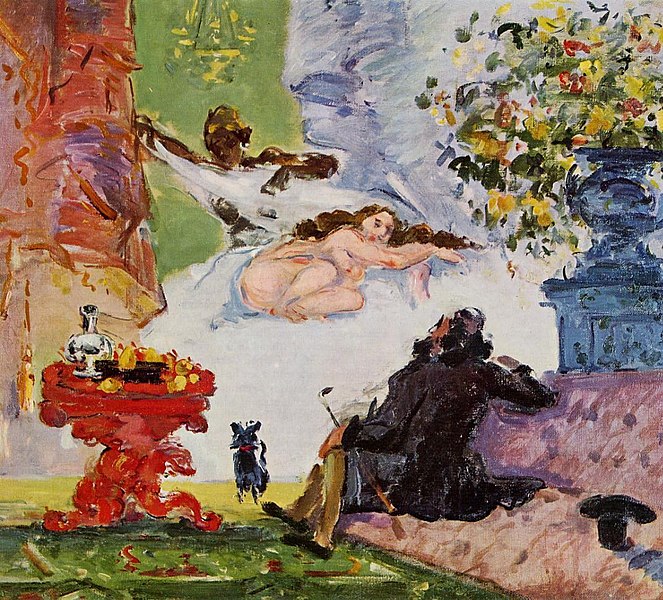
In his painting A Modern Olympia (1874), Paul Cézanne paid homage to Édouard Manet’s controversial Olympia (1863), which was initially shown at the 1865 Paris Salon.
The Venus of Urbino by Titian (1534) served as inspiration for Manet’s initial work and then Cézanne’s painting..

